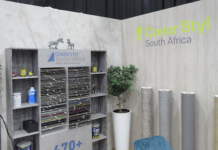Following a feature concerning the 3 biggest LED wiring mistakes in the signage industry, and how to fix them, this follow-up outlines the correct calculation to apply when working out the accurate size of your Switching Mode Power Supply (SMPS).
Furthermore, a section illustrating three different solutions to eliminating ‘hot spots and dark spots’ in signage will ensure clients will remain impressed with your handiwork.
THE LED FORMULA
LED MODULE’S POWER CONSUMPTION WATTAGE x NUMBER OF MODULES (+ 30% SAFETY FACTOR) = TOTAL POWER SUPPLY UNIT WATTAGE
When using an SW III 160 LED module.

Calculating number of modules and calculating 30% safety factor (when using 150W PSU).

Always check the wattage on the specific LED modules, the formula is universal and will work for any LED module as long as you have entered the correct values into the formula. When it comes to the installation of LED’s in the signage industry, ensuring that you apply the correct formula will help you achieve optimally illuminated signage with totally even light distribution. Your signage is guaranteed to remain constant with no illumination faults or flickers, giving the installer the confidence to guarantee that the particular sign will last even longer after its warranty period.
THREE SIMPLE CHECKS TO ELIMINATE HOT SPOTS AND DARK SPOTS
‘Hot spots and dark spots’, or ‘zebra stripes’ as Exion’s Jay Kim has dubbed them the South African way (otherwise known as ‘tiger stripes’ in Europe and America), are created as a result of an uneven distribution of lighting.
Hot spots occur when LED modules are installed too close to the surface of the sign face; dark spots occur as a result of too few LED’s installed.
For examples of zebra stripes and bright spots, see image 3, 4 and 5. (Images: Exion Corporation).
SOLUTIONS:
Know your LED population
• If there are too many LED’s spaced too close together, it will result in hot spots.
• Too few LED’s spaced too far apart = dark spots.
• It is essential to know the correct spacing of your LED based on the depth of your return, to ensure that your project is evenly illuminated.
• Check your wiring diagram, understand what is required and make sure you follow all the steps.
Substrates used
• It is very important to make sure that your materials used are those with LED light diffusing properties. Specialised materials have been developed to ensure that hot/dark spots can be avoided.
• Acrylic light diffusion sheet comes highly recommended in the industry.
• Polycarbonate light diffusion sheet is another good example.
• Know your materials and their capabilities to provide the best possible finished product.
For a good example of using LED optimised diffusion acrylic sheet, see image 6.
Lens of LED
• Check the LED lens specifications: an LED with a 160° illuminating lens is highly recommended when looking for an even, continuous spread of light.
• Does the LED have a diffused lens?
• Is the LED a 120°,160°, highpower or direct lens?
• Is this LED best suited for your design? Following these steps will ensure quality and help you create beautiful signage.
See Live Examples
Look out for the demonstration video on correct calculations and solutions on the Sign Africa Facebook page as well as www.youtube.com/watch?v=-8QdtbqUUz4).
|
LOCAL DISTRIBUTOR |














